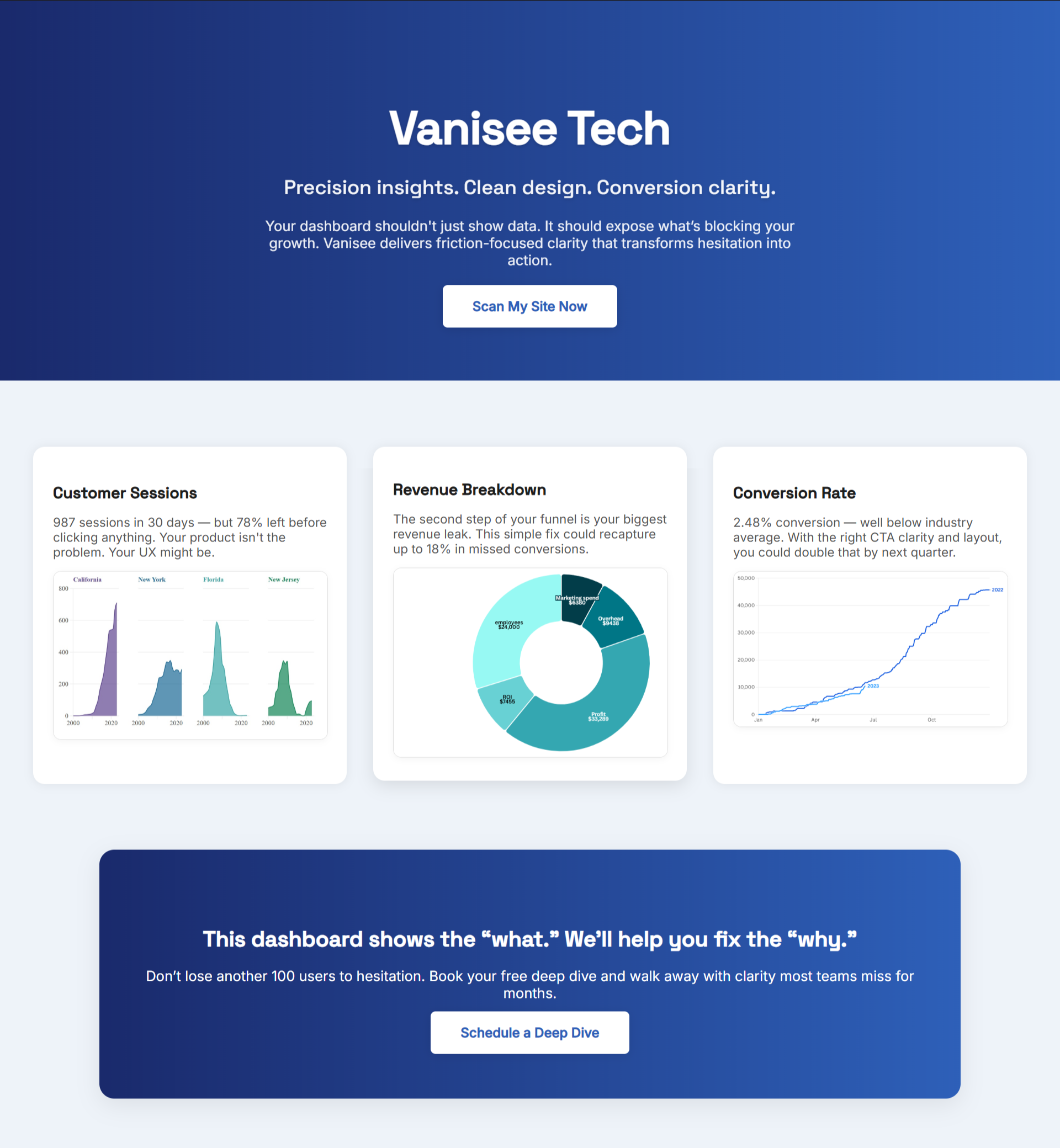Money doesn’t only vanish in downtime or big outages. It slips away when new users hesitate, stall, and never return. That loss is onboarding debt—friction that builds up across your first steps. You feel it weeks later when renewals dip and your acquisition spend has already been used up.
What Onboarding Debt Really Is
Onboarding debt is friction that accumulates in the first minute, the second session, and the early proof moments. It forms when a SaaS development company ships “done” screens without designing those moments. Headlines don’t say who it’s for. Buttons don’t match intent. Proof sits too low. Mobile layouts bury the action. The product looks finished while adoption quietly falls.
We’ve seen this pattern before. As outlined in The SaaS Development Company Blind Spot That Costs You Trust, trust collapses when proof and clarity sit below the fold. And when the partner builds for a later stage than you’re in, you inherit complexity users can’t navigate—exactly the warning in The Hidden Risk of MVP Development Company Misalignment With Your Stage.
Early Warning Signs You’re Carrying Debt
Watch week one after any release. These signals tell you the bill is already due:
- Trials fade before a second session. People explore once and never come back.
- Support gets basics questions. Users ask “where do I start?” not “how do I do more?”
- Usage clusters in one corner. The product’s main promise is the least used area.
- Button copy gets ignored. Secondary links win clicks over the primary action.
- Mobile drop-offs. Sessions start strong on phones and die at the step that should convert.
One signal is a leak. Several together predict churn.
How the Debt Gets Created
No one sets out to create onboarding debt. It creeps in through habits: feature parity lists, demo-friendly tours, edge cases that eat scope, copy that sounds clever, and reviews that live too far down the page. Scope grows. Clarity doesn’t.
.png)
Stop it at the source. Ask your SaaS development company to design three moments before code:
• First minute: Plain-language promise, intent-matching button, reassurance beside the action, proof where eyes land.
• Second session: Saved state, visible progress, one recommended next step.
• Renewal moment: A repeating artifact (report, alert, refresh) on a cadence your users already live by.
The Two-Week Rescue Sprint
You don’t need a redesign. You need a focused sprint that pays back the debt users feel first.
- Days 1–2: Rewrite the first line to name the audience and outcome. Replace clever button copy with the verb users expect. Move one proof cluster near the primary action. Remove one extra step.
- Days 3–5: Fix mobile first. Keep the primary button in the first view. Compress hero media. Limit fonts and scripts.
- Days 6–10: Build the return path. Show saved state and one next step on re-entry. Acknowledge progress with a small in-app card.
- Days 11–14: Ship the renewal artifact. Email, in-app, or dashboard tile that delivers repeatable proof on schedule.
This sprint buys back revenue by removing blocks that stop first value, second visit, and repeat proof.
Instrumentation: The Five Events That Tell the Truth
Put these events in place on day one of the rescue. Review daily for two weeks.
- value_first_minute — first meaningful action completed
- return_48h — user comes back within two days
- next_step — guided action tapped on return
- proof_repeat — renewal artifact delivered and engaged
- kept_account — retention threshold met with at least two repeat proofs
If value_first_minute is weak, fix the first screen. If return_48h lags, improve saved state and the next step. If proof_repeat fades, adjust cadence or placement.
Vendor Questions That Keep Debt from Returning
Use these in every review with your SaaS development company. Clear answers protect your burn.
- “Show the first-minute mobile mock with the headline, button copy, reassurance, and proof we will ship.”
- “Demo the second session with saved state and one next step.”
- “What’s our renewal cadence and the artifact users will see on schedule?”
- “What are our media, script, and payload targets for first load, and how will you verify them on 4G?”
- “Which activation events will be live at launch, and how will we review them in week one?”
- “If activation drops, what’s our 24-hour rollback plan?”
“Speed is the new currency of business.” — Marc Benioff
Speed without clarity burns cash. Speed with clear first minute, return path, and renewal proof turns releases into revenue.
How BluePing Stops Onboarding Debt from Compounding
Skipping a clarity pass is risky. Trials stall, second sessions vanish, renewal proof goes unseen, and ad spend keeps feeding a leaky product. Recovery takes quarters.
BluePing scans your first flows and shows exactly where adoption breaks—weak hierarchy on the opening screen, vague button copy, missing reassurance near the action, slow assets that make the first tap heavy, return views that ignore progress, and renewal cues hidden below attention. Fix these before launch and protect your runway.
This was just the surface. What’s beneath could be costing you thousands in missed activations and renewals. Enter your email to join the waitlist with it literally taking seconds to do, and join the hundreds of SaaS and eCommerce businesses waiting to get ahold of the first UX intelligence engine in the market.

.png)


.png)
